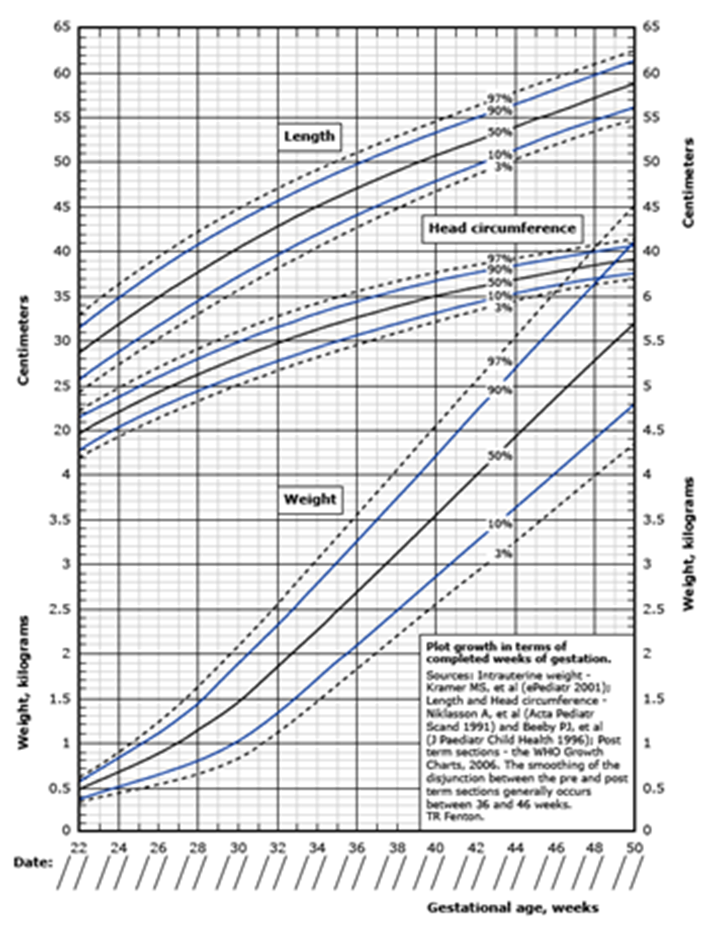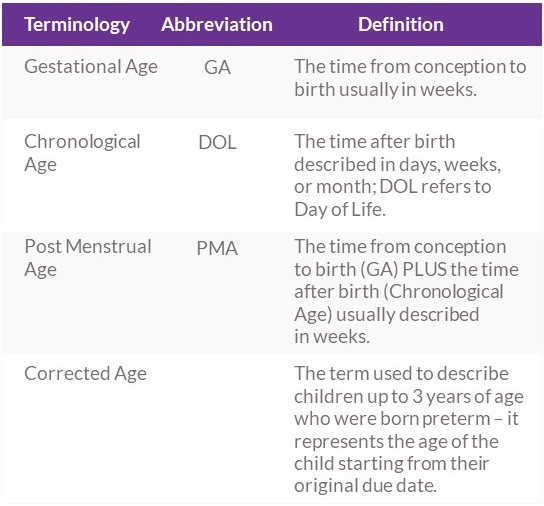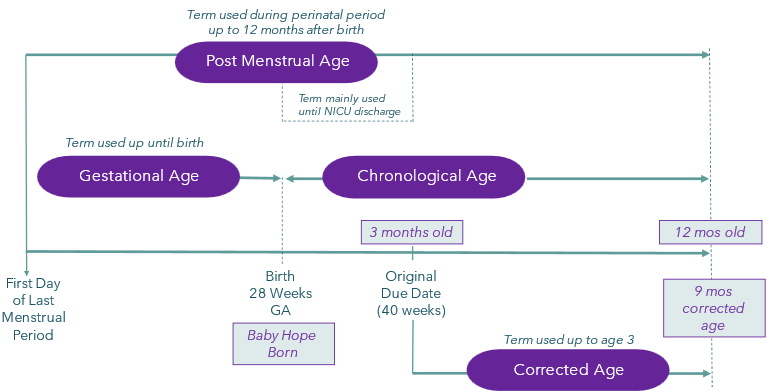How Do I Know If My Baby Is On Track?
Preterm infant growth charts are used to mimic growth that occurs during a term pregnancy. The lines or curves on growth charts show percentiles – 3rd, 10th, 50th, 90th and 97th. These simply represent the averages for babies based on their gestational age.
If your baby’s weight plots at the 50th percentile line, that means that out of 100 babies born at that same gestational age, 50 will be bigger than she is and 50 smaller. It’s important to remember there are no good or bad individual percentiles.
Weight, length, and head circumference assessments are looked at together for an overall picture. Plotting growth on a growth chart multiple points over time is also important. Ideally your baby will follow the same percentile curve that she started from at birth and continue to follow a fairly consistent and proportional (weight similar to length) trend.
Your baby’s weight will be closely monitored. Preterm infants are weighed in grams – 1500 grams equals 3 lbs 5 oz. How much your baby weighed at birth and how early she was born play a huge role in her journey. It is expected that your baby’s weight will drop after birth. For preterm infants, you can expect a 5-15% drop in weight in the first week. One important milestone for your baby will be the number of days until she returns to her birth weight.
Fluid management is super important. This means monitoring and measuring all fluid going into your baby, like nutrition and medications, and all fluid coming out, like vomit, urine, and poop. Your baby’s nurses will record every ounce that goes in and every ounce that comes out. This is often referred to as “I’s and O’s” (ins and outs). Yes, every single dirty diaper is weighed and recorded!
Taking into account all of these measurements and assessments, your doctor will determine if the current feeding plan is working well, or maybe it tells them a few adjustments need to be made.


Terms Used to Define Ages
Doctors and nurses use different words or phrases for your baby’s age.

What is My Baby’s Age?
Here’s a chart to help you understand what the different terms mean and when they are appropriate to use. Let’s look at an example. Baby Hope was born at 28 weeks gestational age (GA) – 3 months early. On her original “due date”, her post menstrual age (PMA) is 40 weeks and she is 3 months old (her chronological age). When Baby Hope is 12 months old, her corrected age will be 9 months. Using corrected age for preterm infants up until age 3 is important to compare neurodevelopmental, medical, and growth outcomes.

Get Answers to Important Nutrition Questions


